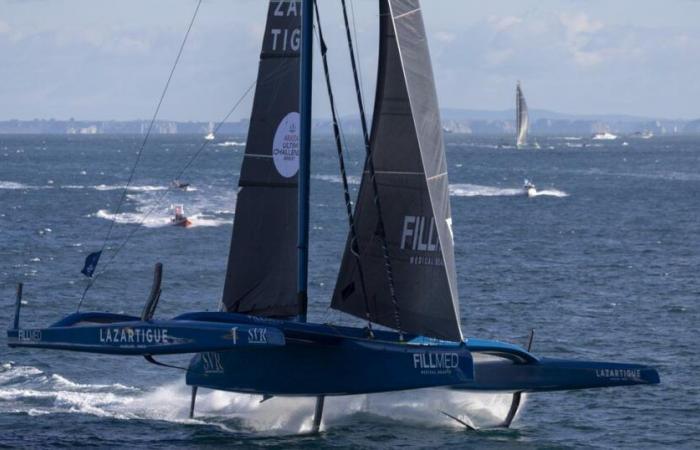François Gabart and his teammates are ready to chase the record held by Francis Joyon on Idec Sport in 2017.
Led by François Gabart, the crew of the maxi-trimaran SVR-Lazartigue announced on Monday that they were finally ready to set off for the Jules-Verne trophy, the record for non-stop, crewed round-the-world sailing. “From this Monday, the SVR-Lazartigue officially enters stand-by (…) The crew is watching for optimal weather conditions to set off”announced the Charentais navigator’s team in a press release sent to AFP.
SVR-Lazartigue hopes to beat the record held since 2017 by Francis Joyon on Idec Sport in 40 days, 23 hours, 30 minutes. To do this, Gabart took with him five experienced sailors: Tom Laperche, Amélie Grassi, Pascal Bidégorry, Antoine Gautier and Emilien Lavigne.
“The spirit of the Jules-Verne is to make the most beautiful trip around the world possible, to make a beautiful navigation around the planet, necessarily with speed since it is a record”explains Gabart in his team’s press release.
In an interview given to AFP at the end of August, he believed that Joyon’s record could fall “very widely” taking into account the technical improvements that have appeared since 2017, starting with the «foils» which allow sailboats to rise above the ocean surface and reduce water resistance.
But, he recalled, “in all sports, there is an element of hazard, which is both something cruel, but which is also part of its beauty.”
Gabart himself, solo this time, completed his first circumnavigation of the world in a maxi-trimaran in 2017 in 42 days, 16 hours 40 minutes and 35 seconds, setting a new solo record.
The SVR-Lazartigue is the second maxi-trimaran to enter stand-by for the Jules Verne trophy this year after the Sodebo Ultim 3, helmed by navigator Thomas Coville, who would be setting off on his 10th round the world trip.
The Maxi Edmond de Rothschild had also planned to try her luck, but Charles Caudrelier’s team finally gave up after dismasting on the way back from a race in October.
The waiting period for crews generally extends until mid-February, after which it is more difficult to leave due to the end of summer and the low pressure systems in the Deep South.
In the event of a departure, the SVR-Lazartigue and the Sodebo Ultim 3 could cross paths with the Vendée Globe IMOCAs, which left Sables-d’Olonne on November 10 and were approaching the dreaded Doldrums on Monday.
Imagined in the 1980s, the Jules-Verne Trophy was to reward the sailor who, imitating the hero Phileas Fogg, would circumnavigate the globe in less than 80 days. Bruno Peyron did it in 1993 in 79 days.






